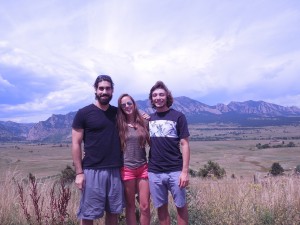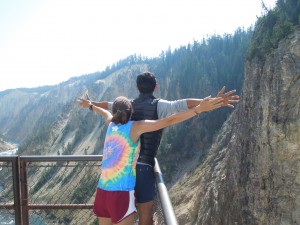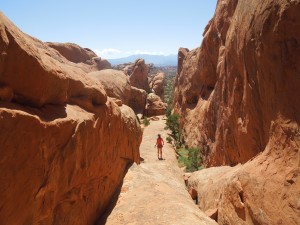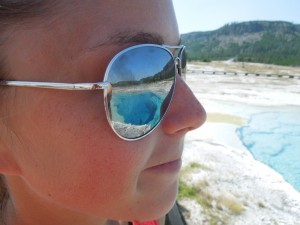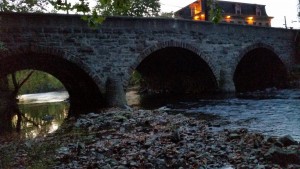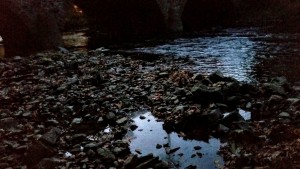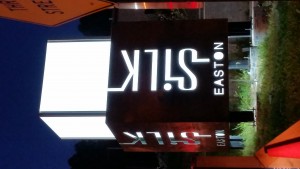This past week we decided to reinvestigate the history of our sight and specifically the mills that used to be there.
We began by looking at old pictures of the site and happened upon on captioned ‘Old Groetzinger Mill’ and thought to look into this site. This led us to find out that this Groetzinger Mill was actually located at our site at the end of N. 4th Street in Easton across from Goose Island on the Bushkill. The Groetzinger family operated the mill for nearly half a century from the late 19th and early 20th century. This seemed to us to be an excellent example of the unique story of this part of the Bushkill.
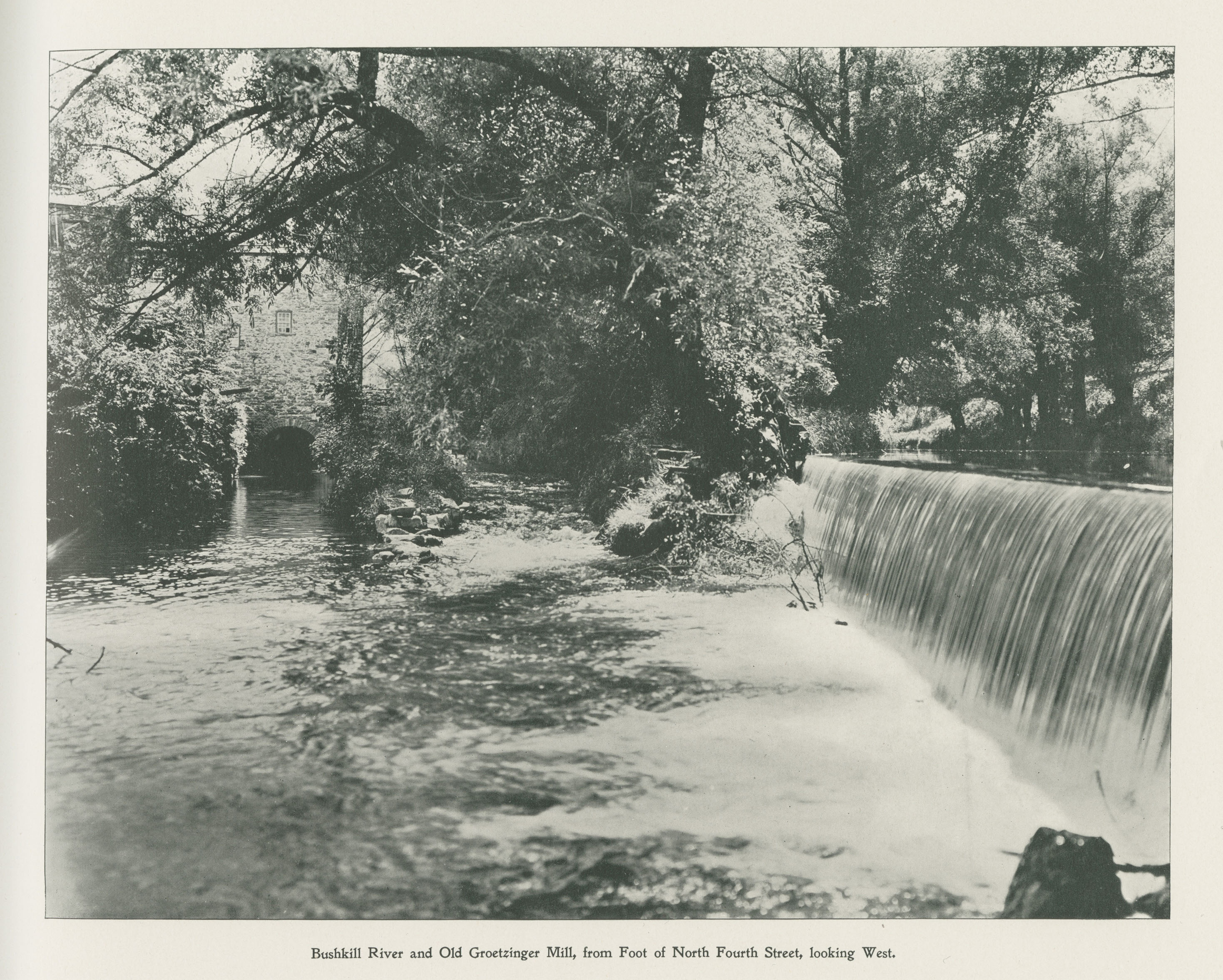
Another article we found said that as early as the 1870’s there have been attempts to set up salmon fisheries on the Bushkill because of their ability to benefit the health of the stream. While the stocking of Atlantic salmon in the Bushkill seemed to be relatively unsuccessful, the people of the Easton area were clearly committed to the idea of manipulating nature to their own advantage.

“this fist is a fact, and in official hands will be irrefutable evidence that the stocking of our rivers with the most valuable fish in the world is not visionary but predictable.”
Today however, the remains of these mills are gone and the general respect for the natural benefits of the Bushkill are lacking as well. Both sides of the creek are thoroughly overgrown, making it difficult to find any historical evidence of previous human development. From a natural standpoint, the Bushkill Creek used to be the center of attention in the area, with humans settling and developing in harmony with the creek. Today, it seems as if the community has built up and around the creek, ignoring any potential aesthetic or practical use. The arts building that bridges the creek is symbolic of the idea that Easton no longer values the creek as local residents once did. It has literally been built over, out of sight and out of mind, providing little more than a source of runoff from the surrounding streets or a shelter for the homeless.
On the Downtown side of the creek, next to the parking lot, is an old abandoned building. It is not old enough to have a relation to the Groetzinger Mill, but it may be built over the original area of the mill. It is so close to the water that we wonder if the creek’s banks were filled in to support such a large building.
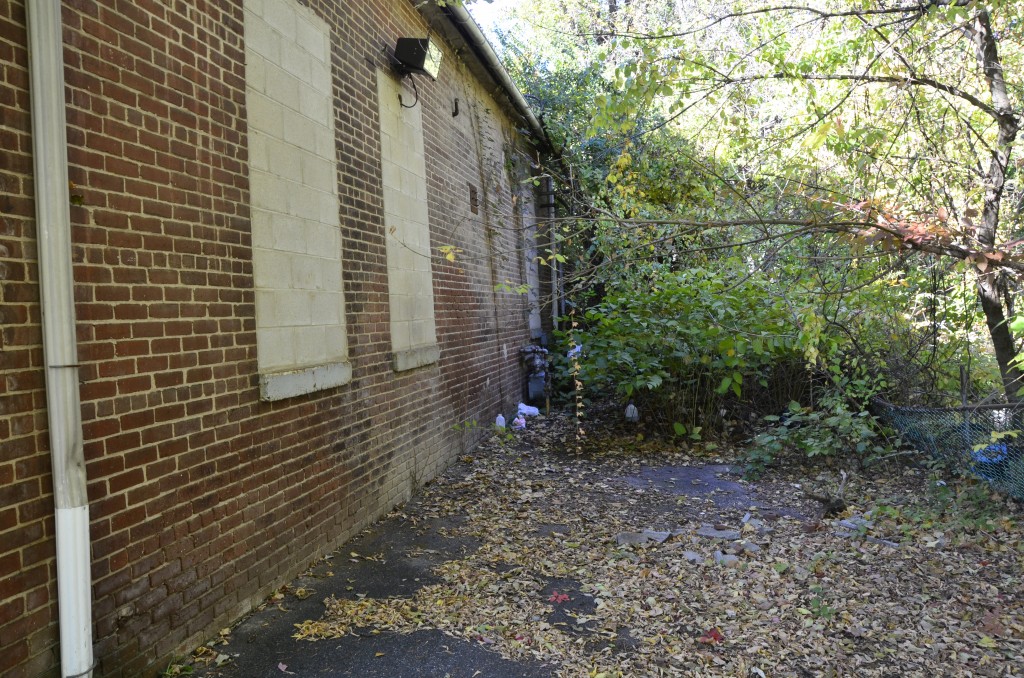
On a separate note, the foliage along the creek seems to be changing more slowly that the rest of the area. The leaves on the trees are just barely starting to turn, while the ground cover and shrubbery still looks nearly as full and as green as it did in September. The water level also seems to remain relatively steady.
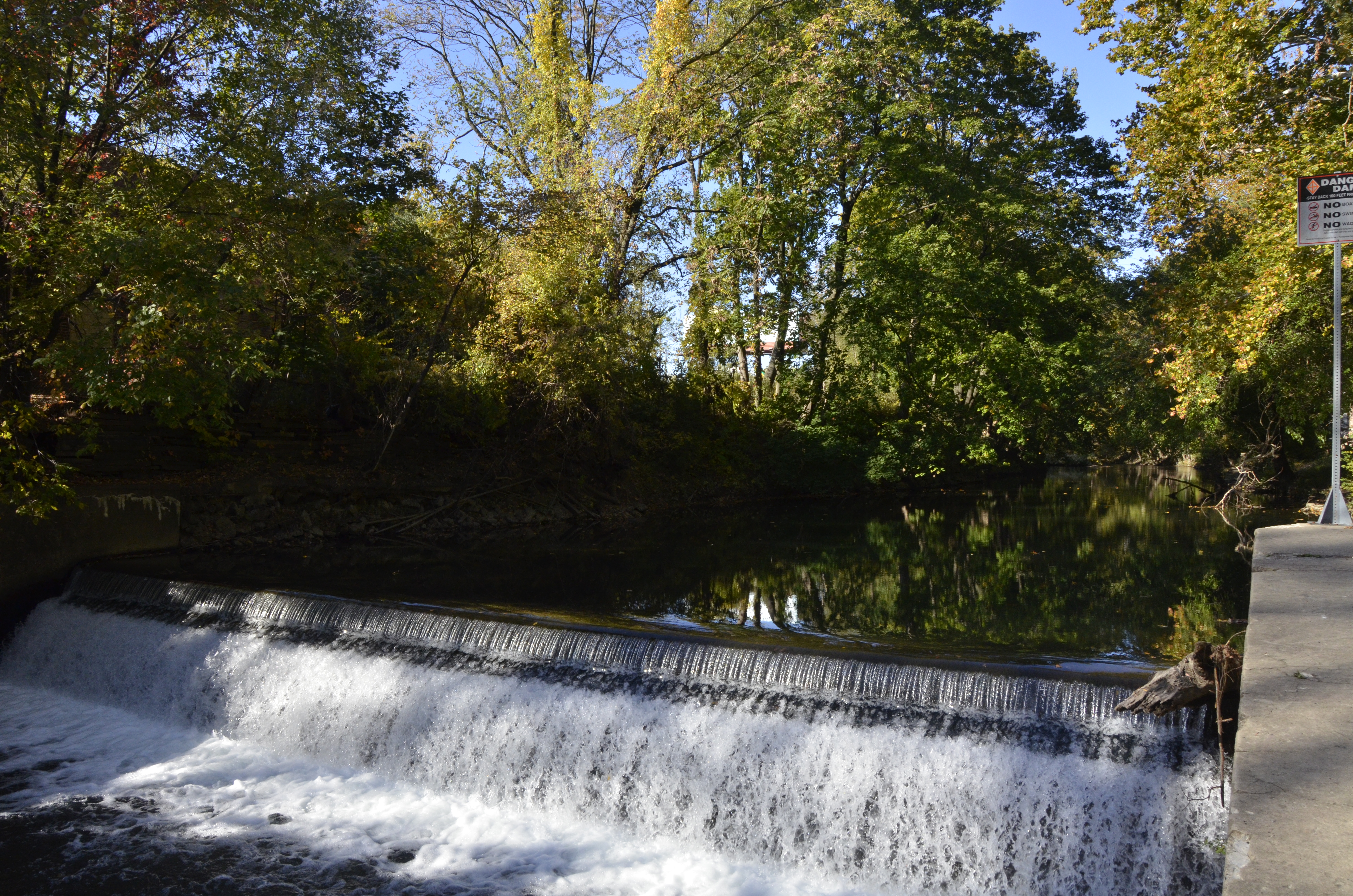
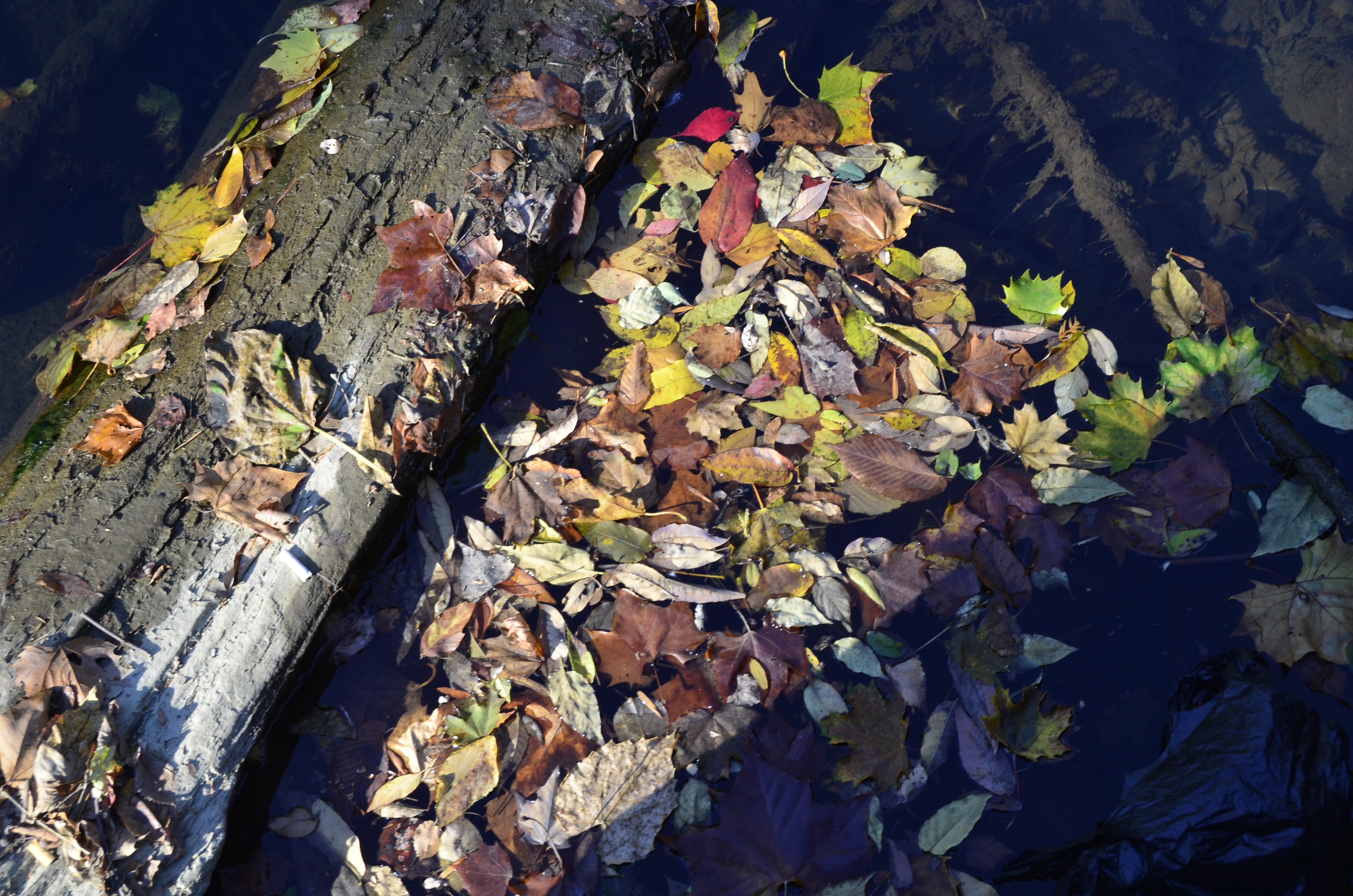
Final thoughts: We learned a bit more about the artwork hanging from the arts building. Stacy Levy created the piece in 2011. “Bushkill Curtain spans the Bushkill Creek in Easton, Pennsylvania, using the arched opening under an old silk mill. The water flow of the creek varies widely depending on rainfall. Bushkill Curtain will register the changing levels of water, hanging straight down in low water or floating on the surface as the stream rises. It also responds to the wind, blowing like a sheer fabric. This temporary project (June 2011 through August , 2012) was created for The Arts in the Urban Environment Festival. This site is a juncture where the masonry of the industrial architecture meets with the liquid nature of a stream. The curtain creates a meeting point of manmade materials with the elements of wind and water. It is made of 750 buoys strung on steel cable.”
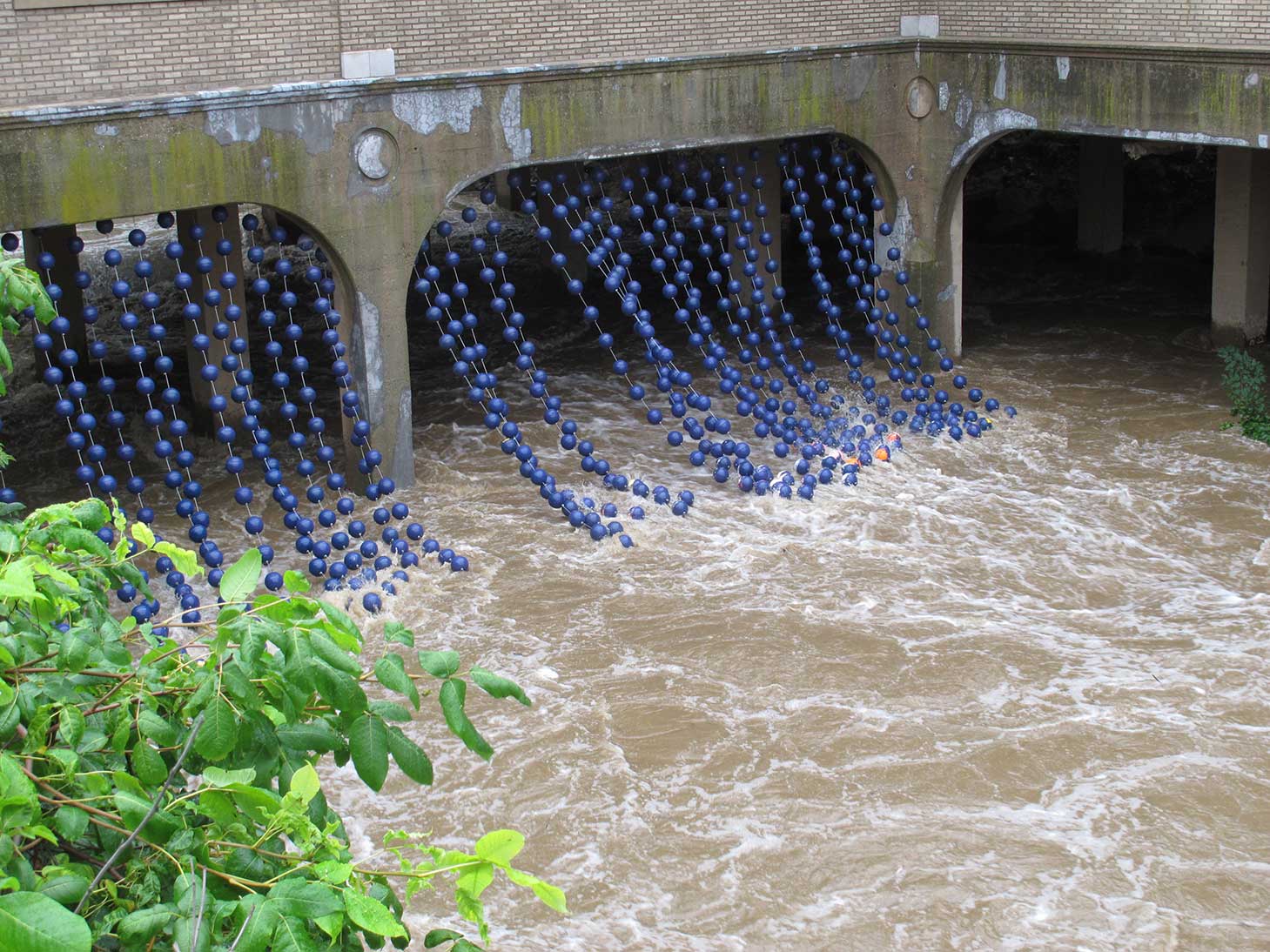
Credit: Stacy Levy http://stacylevy.com/installations/images/bushkill1.jpg

